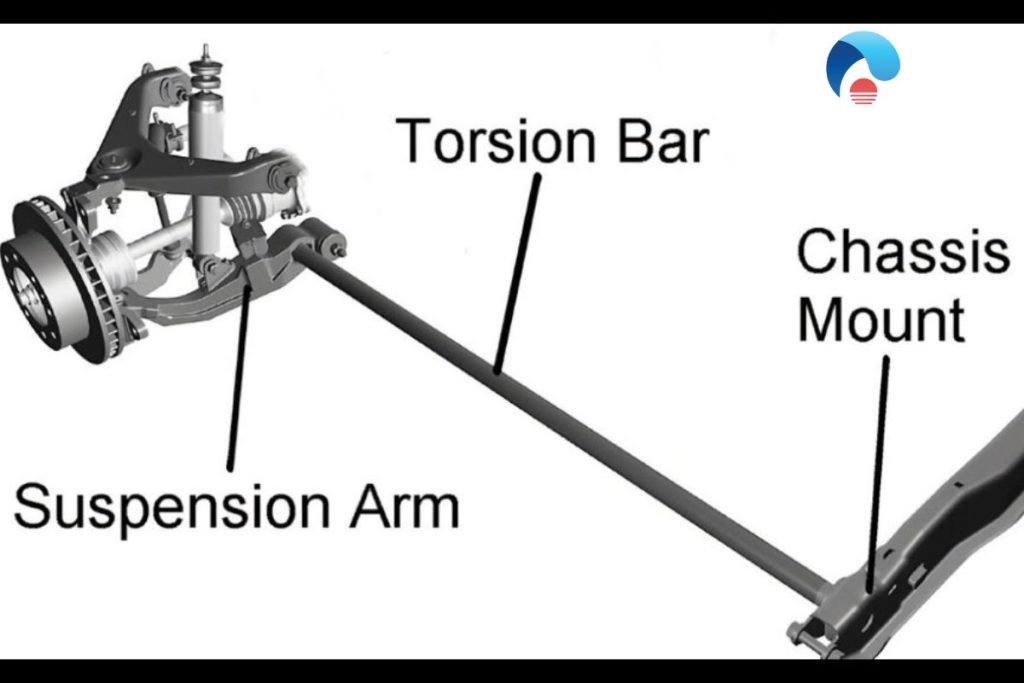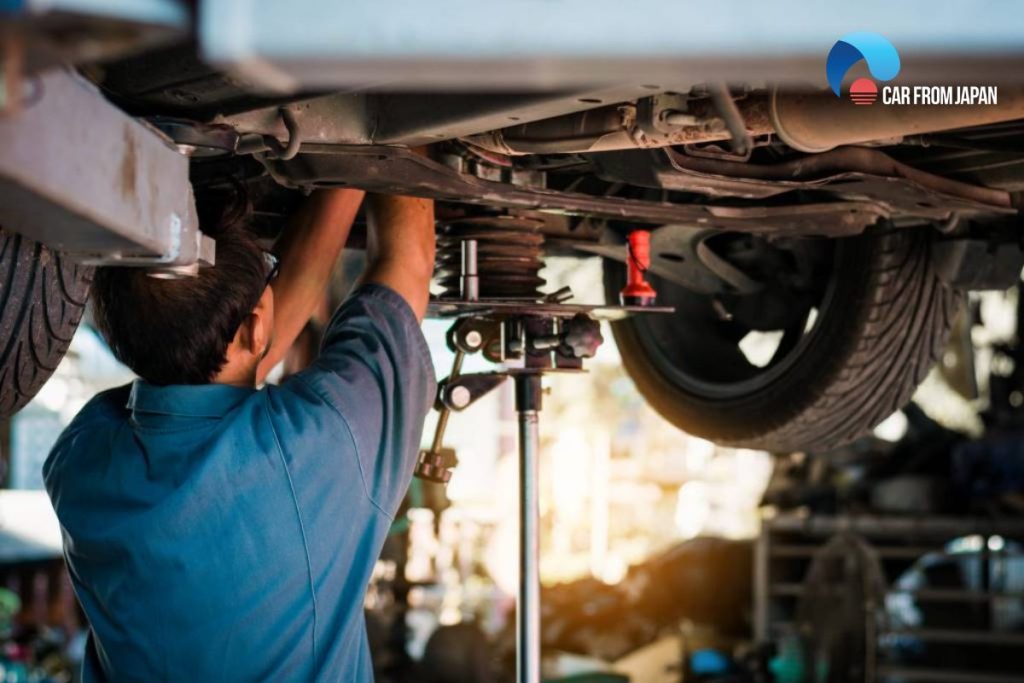More or fewer car owners know that torsion bars are a simple yet important component in many different vehicles including cars and trucks. And in addition to its importance, how does a torsion bar work?
The torsion bars absorb most of the impact of the road surface by twisting while maintaining the vehicle’s weight.
This torsion force is also known as the torsion force. One end of the rod is mainly attached to the handlebar, while the other end is linked to the car chassis.
Let’s get into the article to get the answer to this question and some additional interesting notices that you may want to take a closer look at later.
Contents
- What Is A Torsion Bar?
- How Does A Torsion Bar Work?
- Pros and Cons of A Torsion Bar
- History of The Torsion Bar
- How To Execute The Torsion Bar Adjustment?
- FAQs on How Does A Torsion Bar Work
- What are the symptoms of a bad torsion bar?
- Can I drive with a damaged torsion bar?
- What if I tighten the torsion bar too tight?
- Why do some off-road vehicles use torsion bars instead of coil springs?
- How can you adjust ride height with a torsion bar without changing any springs?
- Do torsion bars offer any advantage in crash safety?
- Can you replace a broken torsion bar with one from another vehicle?
- Why do some mechanics say torsion bars are easier to lift for bigger tires?
- Wrapping Up
What Is A Torsion Bar?
The torsion bar is a flexible spring that can be moved around its axis by twisting. The torsion bars are designed based on the torque amount used during the torsion of the spring, the torsion angle, the overall size of the torsion bar, and its material.
The most common places to find torsion bars are in the suspension of a car or truck, in manufacturing machines, or other precision equipment. The flexibility of the spring is the main reason the torsion bar is used.
If a stiffer structure such as a steel bar is used, the load-bearing pressure will be on both wheels and undercarriage.
Alternatively, you can use the twist key to modify the torsion bar at the top of the frame. This modification will also change the ride height of the vehicle.
You can set up this suspension at both front and rear. However, it is more commonly used in the front.
How Does A Torsion Bar Work?
A torsion bar works by counteracting the torque placed on it. When one end of the torsion bar is attached to an immovable object, the other end of the rod is twisted, thus creating a torque.
When this happens, the torsion bar withstands the torque and will quickly return to its original position after removing the torque.
In general, the object that cannot be moved is usually a frame. If no force is applied to the torsion bar, it will stay in place until a force is applied.
For example, the other end of the rod will be contacted by a handle. The moving handle is fixed on the frame and this creates a twisting motion on the rod. In turn, this provides the torque needed to create a spring.

Pros and Cons of A Torsion Bar
Pros of a torsion bar
The main advantage of a torsion bar is that it is inexpensive. It doesn’t have a lot of things – it’s just a rod mounted on metal. So it can be produced quickly with minimal cost, reducing the operating cost of the vehicle.
Another pros of torsion bars is that they are easy to maintain and replace. The bars can be easily connected to other similar or even relatively-like but more complicated suspension systems.
This means they can work on their or complement a more sophisticated suspension.
Cons of a torsion bar
The main disadvantage of torsion bars is that they do not perform as well as other systems. This is because of their simplicity: If the suspension isn’t complex enough, it can’t handle collisions either.
Sp sitting in a car with a torsion bar may be less comfortable than sitting in a car with a different suspension, although it is better than nothing.
History of The Torsion Bar
Although the technology of a torsion bar was around before the second World War, with Citroën introducing it to the world with their Traction Avant, it only really came into common use in the 50s.
Chrysler is arguably the manufacturer that markets this torsion bar technology the most, with a suspension with the cryptic name of “Torsion-Aire”, which doesn’t look like a real modern air suspension, but they believe it’s the thing that is most similar to it at the time.
It gave their cars the famous ride comfort and infamous body roll. But after this successful marketing campaign, every other manufacturer saw the obvious advantages of this type of suspension and its marketability.
By the late 50s, American cars had grown considerably in size and weight, they needed a sturdy suspension to somehow maintain a level of comfort and system. And since then, the hanging torsion bar is the perfect tonic.
How To Execute The Torsion Bar Adjustment?
At times, it may be necessary to adjust the vehicle height. This is done using the adjusting pin at the top of the torsion bar frame.
The weight placed on the torsion bar handle does not change when this adjustment is made. When manipulating the torsion bar in this way, the steering feel can be a bit stiffer.
This is due to the new angle of the joystick. It is also possible that the adjustment pins have been injured too far, causing a lack of space between the vehicle’s joystick and the top of the torsion bar closest to the vehicle’s underside.
After changing the height of the torsion bar, you should check the vehicle alignment to ensure that the car body weight is properly distributed.
Step-by-step guide on how to perform a torsion bar adjustment
Place your vehicle on a sturdy set of racks to prevent the suspension from buckling before modifying the torsion bar.

Now, starting from the side of the vehicle, perform the following steps:
- Find the torsion bar under your car using a slide. You’ll notice an upward pin in the center of the rack. It’s best to make a mark on the bolt to keep track of the number of adjustments you’ll be making when screwing the bolt.
- If you turn the bolt clockwise, it will tighten, increasing the amount of load that can be applied to the torsion bar.
- When you lower the car and the spring speed is accessible, you will have to turn the pin counterclockwise. Usually, a full rotation of the bolt will give you the right result.
- Remove your vehicle from the jack and measure the change in vehicle height. Remember that the two sides of the front must be level with each other. One side must not be higher than the other.
- Finally, if the edges are not equal, you need to re-adjust the bolts by repeating the process from the beginning.
FAQs on How Does A Torsion Bar Work
What are the symptoms of a bad torsion bar?
A broken torsion bar may cause a shrill noise will begin to emanate from underneath your vehicle. If you are driving on a rough road, you will hear it more.
If you notice your vehicle wobbling at an angle accompanied by a sudden rattle, the torsion bar may also wear out.
Can I drive with a damaged torsion bar?
You can drive with a broken torsion bar. However, you must be careful when turning and driving on rocky roads, as you will not be able to control it smoothly.
What if I tighten the torsion bar too tight?
If you tighten the torsion bar too tight, you may find that your vehicle moves more difficult than usual.
Excessive tension will also reduce traction retention, making it harder for you to accelerate and turn faster.
Why do some off-road vehicles use torsion bars instead of coil springs?
Torsion bars are compact, durable, and easy to adjust for ride height, perfect for vehicles where ground clearance and suspension travel are critical.
How can you adjust ride height with a torsion bar without changing any springs?
By turning the torsion bar’s adjuster bolt, you preload the bar more or less, which raises or lowers the vehicle, no new parts needed.
Do torsion bars offer any advantage in crash safety?
Indirectly. Their compact design can free up chassis space for better crumple zone engineering compared to bulky coil setups.
Can you replace a broken torsion bar with one from another vehicle?
Sometimes. But torsion bars are carefully tuned for specific weight and length.
Using the wrong one can ruin handling or cause uneven ride height.
Why do some mechanics say torsion bars are easier to lift for bigger tires?
Because you can raise ride height simply by adjusting preload, avoiding expensive spring swaps, though it can affect CV angles and suspension wear.
Wrapping Up
Simply put, a torsion bar is a straight bar spring that can be twisted when subjected to tension.
The two ends of the rod are connected by jaws allowing you to control the torsion bar as it twists and moves back into place.
Now you have a comprehensive understanding of how does a torsion bar work. We hope this information will be helpful to you at some point. See you again with other notes about car suspension system.



